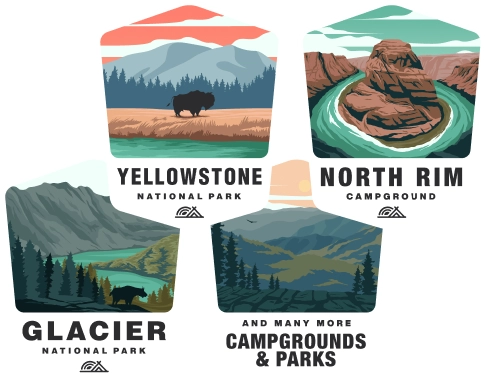Camping at Shotgun Creek Off-Highway Vehicle Staging Area
Overview
The Shotgun Creek Off-Highway Vehicle (OHV) Staging Area is an entry point for off-road enthusiasts who wish to explore the Shotgun Creek area's network of trails. Typically, such areas provide facilities to support the use of dirt bikes, ATVs, side-by-sides, and other OHVs. The staging area often has amenities for day use, such as parking, restrooms, and picnic spots.
Location and Access
The staging area is located in the Shotgun Creek park area, which usually refers to a natural region that may feature forested trails and varied terrain perfect for off-highway vehicles. The specifics of its location, including the address and how to access it, can vary so it is best to consult a local map or navigation services before making a trip.
Facilities and Features
Parking: There will be designated parking spots for both vehicles and trailers. Parking lots are designed to accommodate the extra space required for unloading and loading OHVs.
Restrooms: Basic restrooms are typically provided at staging areas for convenience.
Picnic Areas: Many staging areas have picnic tables and sometimes shelters where visitors can take a break and have a meal.
Trail Information: Directional signs, maps, and information boards are often displayed to inform visitors of the trail systems, difficulty levels, and any regulatory notices that need to be followed.
Loading Ramps: Some staging areas are equipped with ramps to assist in the loading and unloading of OHVs.
Rules and Regulations
Vehicle Requirements: All OHVs must meet specific state regulations regarding safety equipment, noise levels, and emissions. They usually need a visible and current registration sticker or plate.
Safety Gear: Riders are typically required to wear safety gear, including helmets, gloves, and eye protection, depending on the state's laws.
Noise Restrictions: There may be noise level restrictions to minimize the impact on wildlife and other visitors.
Trail Etiquette: Riders are expected to follow trail etiquette, including keeping to the right, yielding to uphill traffic, and staying on designated trails to protect sensitive habitats.
Pets: If pets are allowed, they generally must be on a leash, and owners are expected to clean up after them.
Alcohol: Alcoholic beverages might be prohibited on federal lands or specific recreation sites.
Operating Hours and Seasons
The operating hours for the staging area might be seasonal or subject to change based on weather conditions and daylight hours. It is recommended to check with the local managing authority for the most current information.
Fees and Permits
There might be a day-use fee to access the staging area or an annual pass that could be required. Additionally, OHVs typically require a valid permit or a decal indicating that the mandatory fees have been paid.
Safety and Environmental Concerns
Emergency Preparedness: Riders should be prepared for emergencies with a first-aid kit, sufficient water, and a means of communication.
Fire Awareness: There can be fire restrictions, especially in dry seasons. Campers should be aware of the current fire danger levels and any burn bans.
Wildlife: As the area is likely to be rich in wildlife, visitors should be aware of the presence of animals and the need to maintain a safe and respectful distance.
Contact Information
For the most accurate and updated information, contacting the local land management agency, such as the Bureau of Land Management (BLM), U.S. Forest Service, or a specific state agency, is advisable. They can provide details on current conditions, any changes to the area's management, or events that may affect access and use.
